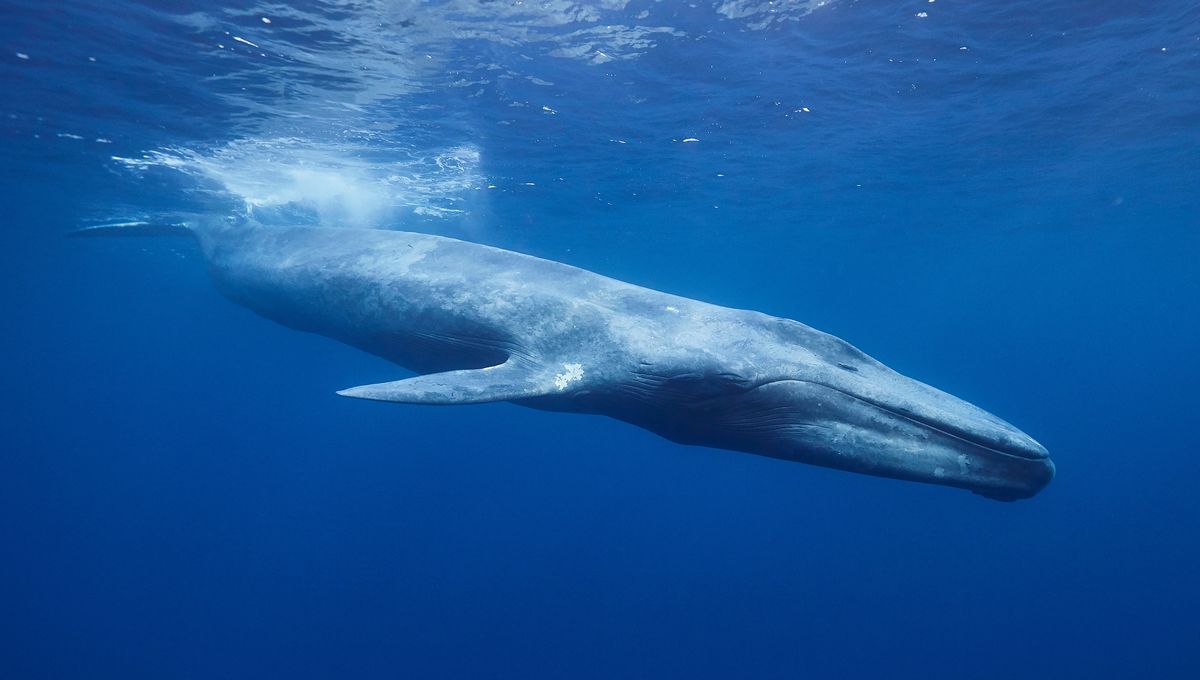
Avoiding predators is one of the most important jobs for many members of the animal world. Even ocean giants like baleen whales have something to fear from killer whales, their only known natural predators. To avoid coming across killer whales, new research has revealed that some whale species might be whispering through the ocean, hoping to sneak around without detection.
ADVERTISEMENT GO AD FREE
Scientists grouped different whale species into either “fight” or “flight” sections depending on their response to orcas. Whales in the fight group – North Atlantic right whales, bowhead, humpback, and grey whales – are slow-moving, have their calves in shallow waters, and are typically those that stay and defend their calves from killer whale attacks. By contrast whales in the “flight” group – including blue, fin, sei, minke, and Bryde’s whales – travel faster and have their young in the open ocean, and will try to speed away from approaching orcas.
The fight and flight strategies definitely evolved in response to killer whale predation. Baleen whales have no other natural predators.
Trevor Branch
interestingly, the study shows that most flight species, despite having some of the loudest calls in the ocean, usually can’t be heard by orcas more than 1 kilometer (0.6 miles) away. Killer whales can’t detect songs in the ocean of less than 100 hertz, and can only hear very loud sounds below 1,500 hertz. The flight species typically produce noises of less than 1,500hz and are what is known as “acoustically cryptic” as a predator avoidance strategy from killer whales.
“The fight and flight strategies definitely evolved in response to killer whale predation. Baleen whales have no other natural predators,” study author Trevor Branch told IFLScience.
While fight species congregate together in groups for breeding in shallow waters, they often take advantage of their safety in numbers and will actively defend calves together. This is handy for breeding since the whales do not have to travel far to find a mate. However, the male whales must impress the females with their songs. Humpbacks, bowheads, and south right whales all produce elaborate songs to attract mates.
For the flight species, there is something of a trade-off. They must call loudly enough to attract a mate, but not so loudly that they lead the killer whales to their location. Flight species may also call at lower frequencies since this travels further through the ocean.
The super-low, super-loud songs of flight species like blue and fin whales are the perfect tool: they can attract a female from hundreds of kilometers away, while being acoustically invisible to killer whales.
Trevor Branch
“To thrive, species need to mate and breed successfully while avoiding predation. The super-low super-loud songs of flight species like blue and fin whales are the perfect tool: they can attract a female from hundreds of kilometers away, while being acoustically invisible to killer whales,” continued Branch.
By reviewing research on the different species of whales and their songs, the study found that flight species “produce fewer call types, and their calls are generally simpler and more monotonous”. All the fight species were physically capable of producing calls below the range of killer whale hearing but instead called over a wide frequency range. The blue whale, which is the largest flight species, produces sounds that a killer whale cannot hear, with their loudest sounds below 80 hertz. The same is true for fin whales, which call at frequencies even lower than blue whales.
Interestingly grey whales, which are a fight species, also do not call above 1,500 hertz. This could be explained by their movements and migration. “They [grey whales] migrate predictably close to shore when heading from winter breeding to summer feeding grounds, accompanied by their calves, which is when they are attacked by killer whales. Perhaps this predictability, their small size, and the inability to have group defense in shallow waters (unlike the Mexican lagoons where they produce their calves), makes lower-frequency calls more necessary,” explained Branch.
ADVERTISEMENT GO AD FREE
The study also explores why male whales sing the most, and explains that since the calves are more vulnerable it makes sense that the females have quieter calls to hide from killer whale predation attacks.
The paper is published in Marine Mammal Science.
Source Link: Blue Whales, One Of The Loudest Things On Earth, Are “Acoustically Invisible” To Killer Whales